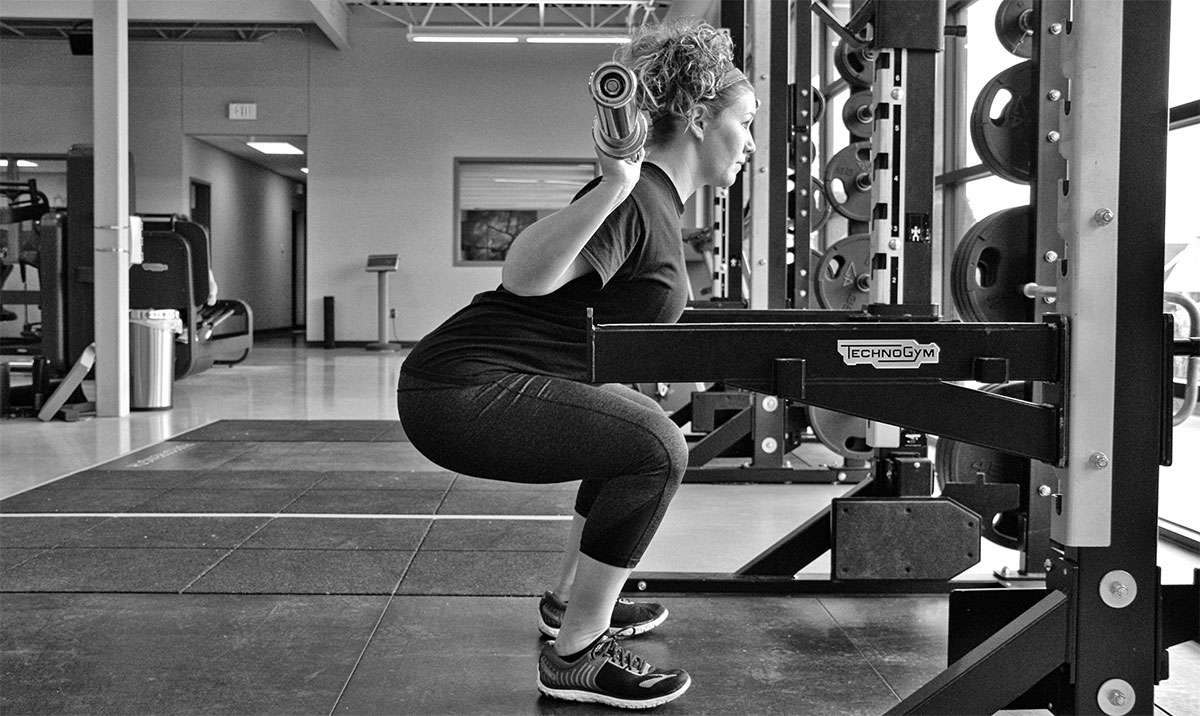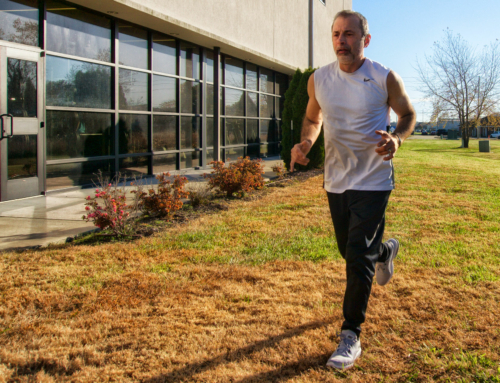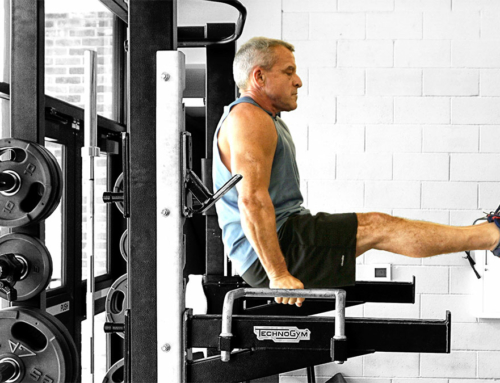Fitness and Health are likely very important to you otherwise you wouldn’t be reading this Blog (unless you stumbled upon this piece by accident, in which case “Welcome.” Stick around with us and see what we’re all about).
Today we are going to examine one exercise that is often called “The King of All Lifts”. That’s right, today we are going to take a look at The Squat.
Without even thinking we perform the squatting movement hundreds of times each and every day. This movement has become so intertwined with our daily lives that we rarely realize how many times we actually are squatting. Our muscle memory has made it so that we perform the squat almost as naturally as walking.
The squat has often been called the king of all lifts because it involves the entire body. In general all movement, not just squatting, relies on good mobility/stability of all of our joints. If our joints are not mobile and our muscles cannot stabilize the joint then we will see a dysfunction in our movement. As we age, our joint mobility and muscle function decreases unless we train daily to maintain our functional mobility. Therefore, move daily and squat more! Remember this, the quality of our squat depends on the quality of our movement.
In our youth, the squat was something we did without limitation nor weakness. We squatted as we played in the sand, we squatted while drawing plays in the dirt in our back yards. I even remember dropping down into a squatting position when I needed a rest from an activity. However, as we age, our movements become a little more limited, either from joint mobility issues or muscle weakness/tightness. Squatting becomes more difficult because we experience joint pain with the movement. This causes us to develop a compensatory movement to avoid pain. If we start avoiding a movement pattern to compensate for our limitation and/or pain we will likely see a dysfunction of some sort rear its ugly head down the road. Therefore, it is imperative to maintain good flexibility and range of motion through daily stretching and range of motion activities. In addition, yoga practice has an amazing impact on the mobility of our joints. Give it a try! (More on yoga another time.)
So let’s breakdown what muscle groups the squat targets. The squat is multi-joint movement pattern and it has many, many variations. The most common, however, happens to be the back squat which, to this day, is one of my favorite lifts while working out. You might say that the squat has a reputation for being one of the most comprehensive movements we perform. If done correctly it will provide our bodies with a great workout and help us keep burning calories hours after our workouts have been completed, all of which is a bonus. Performing the squat with weights, on a routine basis, will help keep your lower body and core strong as well has help with balance and gait performance as you age.
Squatting uses some of the largest muscle groups in our body – the glutes, hamstrings, and quadriceps. These are:
The Glutes
The glutes (gluteus maximus, medius, and minimus) are responsible for helping us maintaining our erect posture, stabilize the hip, and help propel us through the hip extension phase of our gait. The glutes also help raise us up from our squatting position.
The Hamstrings
Hamstrings (biceps femoris, semimembranosus, and semitendinosus) bend the knee and help with hip extension because they attach to the bottom of the pelvis. Although the hamstrings do not control a majority of the load at the hips, they do help the glutes control the amount of hip flexion during performance of the squat.
The Quads
The quadriceps (rectus femoris, vastus lateralis, vastus medialis, and vastus intermedius) make up a very large muscle group in the legs and can be developed to move large amounts of weight if trained correctly. They too help with raising us from the squatting position as well as knee extension. They contract during the down phase (eccentrically – elongating) as well as through the up phase (concentrically – shortening) of the squat.
Naturally we have examined the muscles of the hip and knee joints with regard to the squat, but we must also consider the muscles that control the joints above and below the hips and knees which are the lumbar spine and ankle joints. The muscles that make up those joint segments are the abdominals, erector spinae, and the calf muscles (gastroc/soleus).
The Abdominals
The abdominals (Rectus femoris, external obliques, internal obliques, and transverse obdominus) are responsible for flexing the spine forward as well as stabilizing the spine when upright. Strong abs are essential to optimal fitness. So no matter how much you hate working on your abs, your overall fitness will improve if you add these muscles groups into your weekly workout routine.
The Erector Spinae
This erector spinae group (iliocostalis, longissimus, and spinalis) of the back helps stabilize the spine in the extended position during the squat movement. They also help with all of the other movement patterns of the spine. In order for your to maintain a good, safe posture during the squat, especially the weighted squat, your erector spinae muscles need to be up for the challenge. If you have limited spinal mobility or flexibility your squat technique may be limited.
The Calves
The calves (gasrocnemius and the soleus) are a very important part of the squat that is often overlooked. Your calves are the foundation of your squat for the foot and ankle. They plantar flex (point the foot) and help bend the knee. Since we stand and walk as our primary mode of mobility having strong calves and good ankle range of motion is imperative for good balance and stability. During the squat the ankle must dorsiflex (a term referring to decreasing the angle of the foot and the leg). If you have a tight gastroc/soleus complex, or limited ankle mobility, you will not be able to squat as deeply, which is why you may see people put a plate under their heels sometimes when squatting. You will often see body builders squatting barefoot to truly anchor their feet to the floor to get maximal support from ankle and calf regions. You should always shoot for squatting with your feet flat on the ground to improve your mobility and strength.
Whoa! That’s a lot of information just about the squat! Now let’s take a look at a few examples of different squatting techniques that you can incorporate into your workouts:
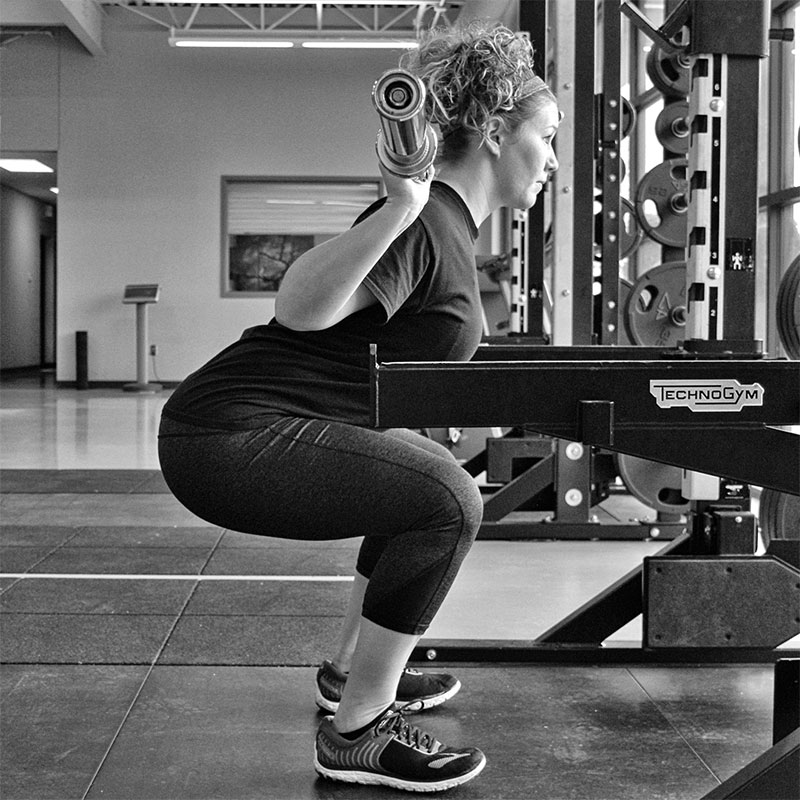
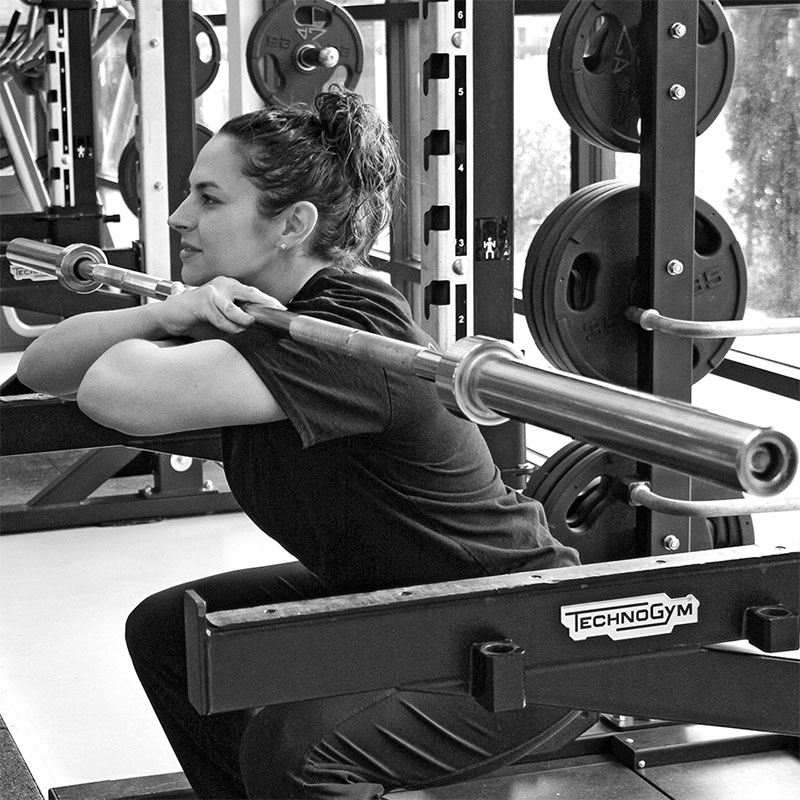
The Back Squat – by far the most popular squat lifting technique.
The Front Squat – two variations: 1. Arms crossed under the bar, 2. High elbow technique with wrists flexed (some people have difficulty with this technique, I prefer the first).
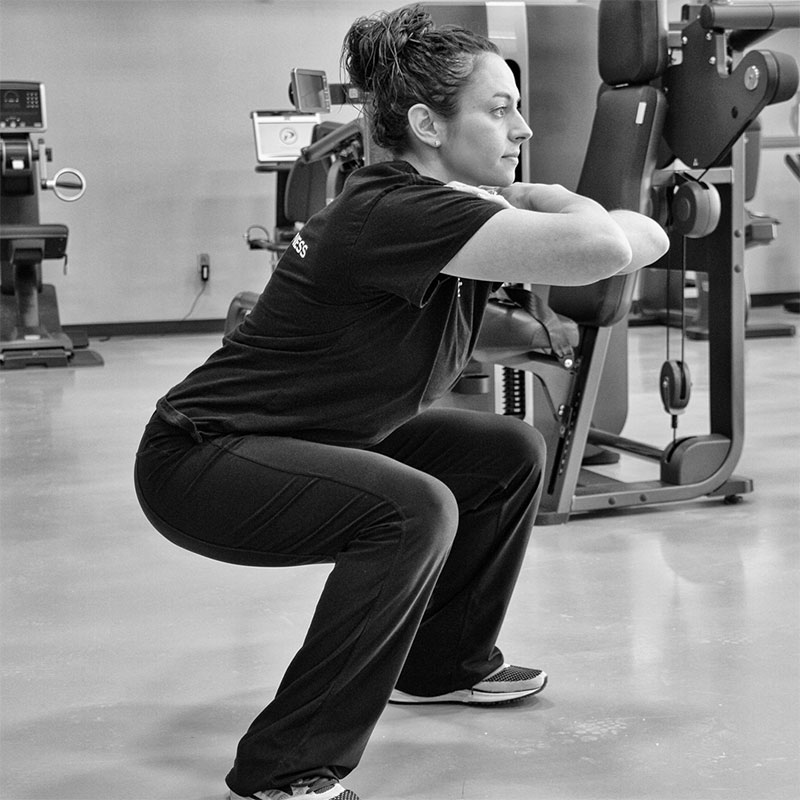
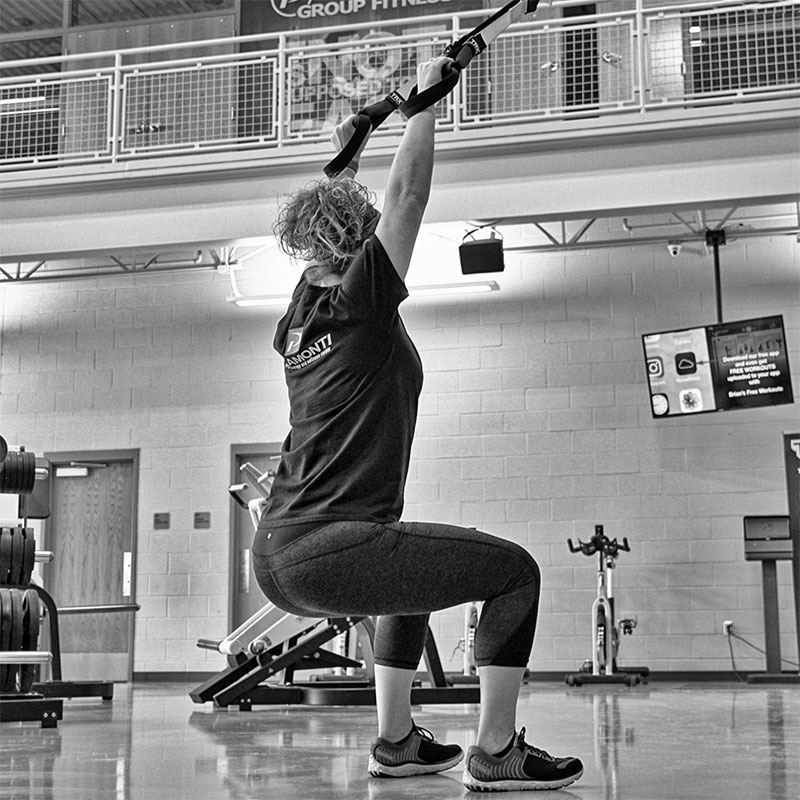
The Body Weight Squat – simple enough, right?
The TRX Squat – just need a TRX or similar piece of equipment.
Those techniques are just a few variations on of the squat, and believe me, there are many more.
So the take away is this: The squat is a comprehensive movement pattern that involves almost every major muscle group of the body. Good lower back, hip, knee, and ankle range of motion are necessary in order to perform a squat with good form. The squat exercise should be incorporated in everyone’s workout in some form or another.
Remember, movement is life!
Brian


